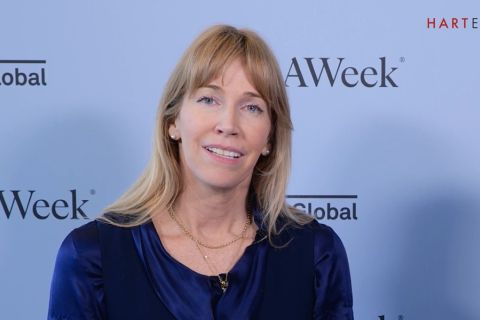Angola wants to cash in on the roughly 3 billion cubic feet per day (Bcf/d) of associated natural gas it produces, most of which is now flared, the petroleum minister said on Oct. 9.
The announcement of efforts to generate more revenues by reducing gas flaring comes as Africa’s second largest crude producer faces a fall in output from its mature oil fields.
“Over the years, Angola has somewhat neglected to capitalize on the natural resources that it has to offer,” Mineral Resources and Petroleum Minister Diamantino Azevedo said in a brochure released at an African energy conference in Cape Town.
He said Angola produced about 3 Bcf/d of associated natural gas, or gas found in association with oil in a reservoir.
“Much of this gas was burned or flared and an opportunity for financial recovery was missed, not to mention the damage that was done to the environment,” he said, without giving the precise volume that was flared.
The U.S. Energy Information Administration (EIA) in June said Angola’s total natural gas output in 2016 was 413 Bcf, of which 254 Bcf was flared, 88 Bcf was reinjected and 60 Bcf sold. The EIA cited figures from gas data firm Cedigaz.
Methane that leaks during oil production and CO2 generated when gas is flared are both greenhouse gases.
Angola is developing a $12 billion offshore project to produce 5.2 million tonnes of LNG a year for export. Angola LNG is a partnership of state-owned Sonangol, Chevron, BP, Eni and Total.
“We are in the process of leveraging other industrial projects for gas monetization, such as fertilizer factories,” the minister said.
Angola’s oil ministry said last year crude output could fall to 1 million barrels per day (MMbbl/d) by 2023 from 1.9 MMbbl/d in 2008, unless there was fresh investment.
Under a deal on supply restraint agreed by OPEC, Angola said it was committed not to produce more than 1.6 MMbbl/d of crude.
“The decline in production is the result of the natural process of field maturation and a lack of investment in resource research and preventative maintenance of equipment,” Azevedo said.
To help address this, he said the government was offering onshore and offshore exploration blocks, including the “highly promising yet largely unexplored” interior basins.
Recommended Reading
Xerion CEO: Battery Industry Infrastructure Buildout Must be Holistic
2024-04-12 - John Busbee, CEO and co-founder of Xerion Advanced Battery Corp. tells Jordan Blum, Hart Energy’s editorial director, that the whole battery industry must advance at the same time in order to be successful.
Schneider Electric’s Heather Cykoski: Infused AI is Everywhere
2024-04-09 - Schneider Electric puts sensors in the technology it provides customers, creating the ability to gather data, predict operations and drive efficiency.
AI Copilot, Not Captain: Pragmatic Cybersecurity to Protect Grid
2024-04-01 - AI experts at CERAWeek by S&P Global issued a wake-up call for the energy sector, suggesting AI could help secure critical infrastructure in a hostile geopolitical landscape.
Gas Executives: US Pipe Dreams ‘Not Dead,’ but Challenging
2024-03-27 - Regulators could pivot as “market signals that may come may be worse than regulators are looking for,” Sempra Infrastructure’s president of LNG said.




